How to make shelter for roses for the winter simple, cheap and, most importantly, reliable? First of all, we need to clearly understand what this shelter should protect our plants from. And it should protect not only from winter cold, but also from excessive humidity.
After all, getting wet and dampening roses in winter occurs almost more often than freezing. I think many people are familiar with the situation when the winter seemed to be warm, but the roses did not survive the winter. It was not frost that killed them, but dampness.
But before moving directly to covering roses for the winter, let's talk about what preparatory work needs to be done before that.
Preparing roses for winter
Actually, you need to prepare roses for wintering in the spring. With proper care, you will grow healthy, powerful bushes and it will be much easier for them to survive the winter than frail and diseased bushes. But these are, of course, too general recommendations, and the specific ones are as follows:
Preparing roses for wintering comes down to ensuring that all the shoots on the bushes are well-ripened by winter. We must do everything to stop the growth of young shoots from August.
Therefore, do all nitrogen-containing fertilizing only in the first half of summer. In early August, it is good to feed the bushes with potassium-phosphorus fertilizer (25 g of superphosphate + 10 g of potassium sulfate per 10 liters of water), and another 10 days later with potassium alone (15 g per 10 liters of water). No more feeding will be required.
From the beginning of September, water the plants very rarely and only if there is no rain. You should not cut roses for a bouquet in the fall; any short pruning provokes the growth of young shoots.
Is autumn pruning necessary? There is no need to prune roses for the winter. Many rose growers simply bend the bushes to the ground, but this is not always possible. More often than not, they are cut off. Roses are pruned immediately before covering. In adult bushes, stems 30 - 40 cm high are left, in young ones 15 - 20 cm. All immature, dry shoots growing inside the bush must be removed. When pruning roses in the fall, you need to keep in mind that in the spring, in most cases, you will need another cosmetic pruning.
Why remove leaves? After pruning, cut off all the leaves remaining on the shoots with scissors (if you tear them off with your hands, wounds will remain on the stems) and throw them away or burn them. Many gardeners often neglect this advice, but in vain. This probably sounds a little strange, but fallen leaves release substances that inhibit the development of this plant.
When to start covering
Roses can easily withstand frosts down to 12 - 15 degrees. Therefore, there is no need to rush to find shelter. Moreover, by covering them until frost, you will be doing them a disservice. For successful wintering, plants need to go through a hardening period.
Cover roses for the winter when the ground freezes.
The simplest shelter for roses
The simplest and at the same time very effective shelter is hilling. Below you see two photos. On one there are roses in autumn, on the other the same plants in spring.
As you can see, all the plants overwintered together. They didn’t have any shelter other than a hillock, and they’ve been hibernating like this for many years. Hilling performs two functions at once.
- the poured earth is an insulating material.
- this mounded mound prevents water from accumulating in the root zone, and this is very important.
The soil for hilling must be breathable and dry. It can be earth mixed with sand or even sand alone. I use compost from a compost heap. It is very convenient; you don’t have to prepare it specially. It is always at hand, and to prevent it from freezing, you need to sprinkle leaves or grass on the compost heap in advance. One bush requires two buckets of compost. We cover the shoots peeking out of the ground with lutrasil in 2 - 3 layers.
As a rule, bushes overwinter very well under such cover.
How to cover group plantings
Compact rose gardens are covered for the winter in the same way as single bushes. Earth is poured under each bush; spruce branches, leaves or pine needles can be thrown on top. All this can be covered with any covering material; there is no need to install arches. Of course, the material must be secured and pressed down so that the wind does not blow it away.
Dry covering method
Still, the most reliable method is to cover roses using an air-dry method. The easiest way to make such a shelter is from an old box and a small piece of lutrasil and film. The photo shows how this is done.
Lutrasil is attached to the box using a stapler or tape, and a film is attached over it (you can do it the other way around, this is not so important). The main thing is that the film covers the top of the box and two sides, and the ends should be covered only with lutrasil, this is necessary for ventilation.
The most caring rose growers living in the northern regions make very impressive shelters for their beauties. The designs of such structures may differ, but I think the principle is clear.
Such shelters can be placed above the plants in advance, leaving only the ends open. The sides are closed with the onset of frosty weather. Roses feel very comfortable in such conditions and overwinter with virtually no losses.
Sheltering a climbing rose for the winter
Be prepared for the fact that sheltering a climbing rose for the winter can last for several days, or even a whole week. A rose with thick, powerful shoots is unlikely to be laid on the ground in one day.This must be done at a positive temperature; in frost, the stems become fragile and break easily. Under no circumstances try to press each shoot separately to the ground. This can only be done by tying the entire bush into a bundle or two bundles and then spread them in different directions.
If, when tilting, you feel that the stems may break, stop tilting and fix the bush in this position. Let him stand like this for a day or two, and then continue until you press him to the ground.
A rose pinned to the ground should be covered with the onset of frost. Sometimes this has to be done even in the snow. In the southern regions there is enough shelter made of lutrasil. Just remember to cover the base of the bush with sand or earth. If your winters are cold, cover the bush with spruce branches and also cover it in several layers with covering material or roofing felt.
Do I need to cover ground cover roses for the winter?
Ground cover roses overwinter well just under the snow. But how can you guess how much snow there will be? It’s better to cover them all. This is done like this:
Spruce branches are placed on the ground under the bush. The branches are pressed to the ground with wire hooks and the spruce branches are again arranged on top. You can also cover it with lutrasil, but most often covering with spruce branches is enough.
Before sheltering for the winter, shoots of ground cover roses do not need to be shortened. Only inflorescences, immature and broken shoots are pruned. However, if for some reason the shoots are cut off or frozen in winter, they will quickly grow back in the spring.
Roses after wintering
All roses do not open immediately after wintering, but gradually. With the onset of spring, the shelter is first only opened slightly to improve ventilation and reduce the temperature. Plants should remain shaded until the ground beneath them thaws.
If the ground is frozen and the lutrasil is removed, then even roses that have wintered safely will turn black and die.
When covering plants for the winter, spruce branches are often used. This can be said to be an ideal covering material. But imagine how many rose bushes there are in our country and how many pines and firs need to be broken off to cover it all! Let's protect not only our flowers, but also our forest, and use artificial materials, of which there are a lot now, to cover plants.


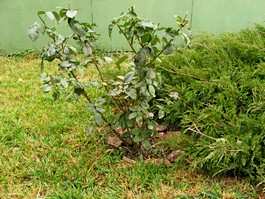
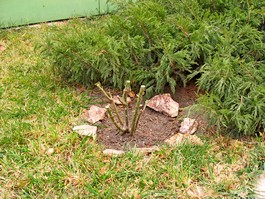
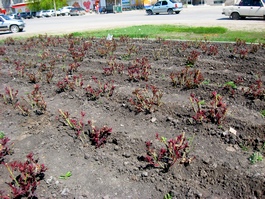
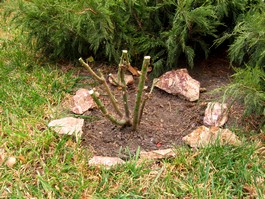
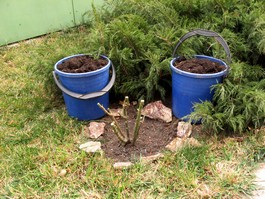
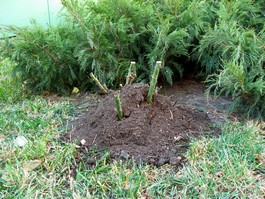
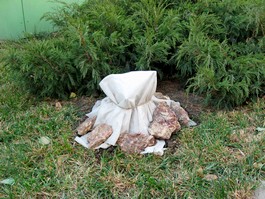
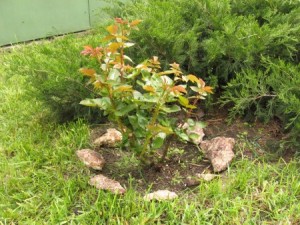
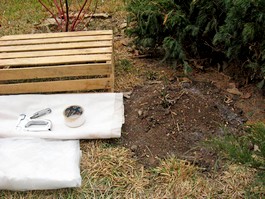

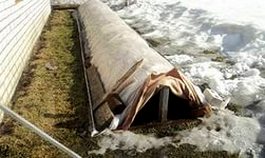
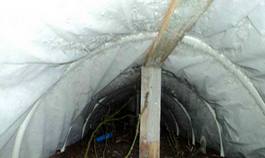
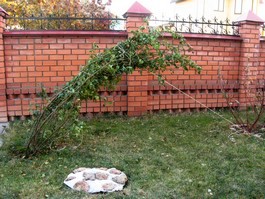
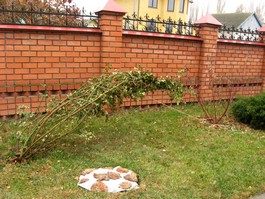
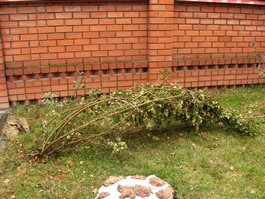
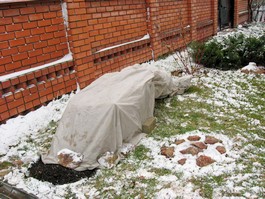
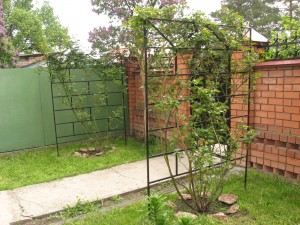

 (17 ratings, average: 4,29 out of 5)
(17 ratings, average: 4,29 out of 5) CUCUMBERS NEVER GET SICK, I'VE BEEN USING ONLY THIS FOR 40 YEARS! I SHARE A SECRET WITH YOU, CUCUMBERS ARE LIKE THE PICTURE!
CUCUMBERS NEVER GET SICK, I'VE BEEN USING ONLY THIS FOR 40 YEARS! I SHARE A SECRET WITH YOU, CUCUMBERS ARE LIKE THE PICTURE! You can dig a bucket of potatoes from each bush. Do you think these are fairy tales? Watch the video
You can dig a bucket of potatoes from each bush. Do you think these are fairy tales? Watch the video
 How our fellow gardeners work in Korea. There is a lot to learn and just fun to watch.
How our fellow gardeners work in Korea. There is a lot to learn and just fun to watch. Eye trainer. The author claims that with daily viewing, vision is restored. They don't charge money for views.
Eye trainer. The author claims that with daily viewing, vision is restored. They don't charge money for views. A 3-ingredient cake recipe in 30 minutes is better than Napoleon. Simple and very tasty.
A 3-ingredient cake recipe in 30 minutes is better than Napoleon. Simple and very tasty. Therapeutic exercises for cervical osteochondrosis. A complete set of exercises.
Therapeutic exercises for cervical osteochondrosis. A complete set of exercises. Which indoor plants match your zodiac sign?
Which indoor plants match your zodiac sign? What about them? Excursion to German dachas.
What about them? Excursion to German dachas.
We don’t cover the growing rose at all at home; in 15 years it has never frozen. A huge bush with shoots 3 meters long and as thick as a human finger. Frosts in winter last only two weeks at the beginning of January, about -20 if you're lucky, but otherwise about -5. So these are the winters we have and we stopped covering ordinary roses, although previously they were covered with nut leaves.
Thank you, it was interesting to read about the shelter of a climbing rose
does not work
What exactly doesn't work?